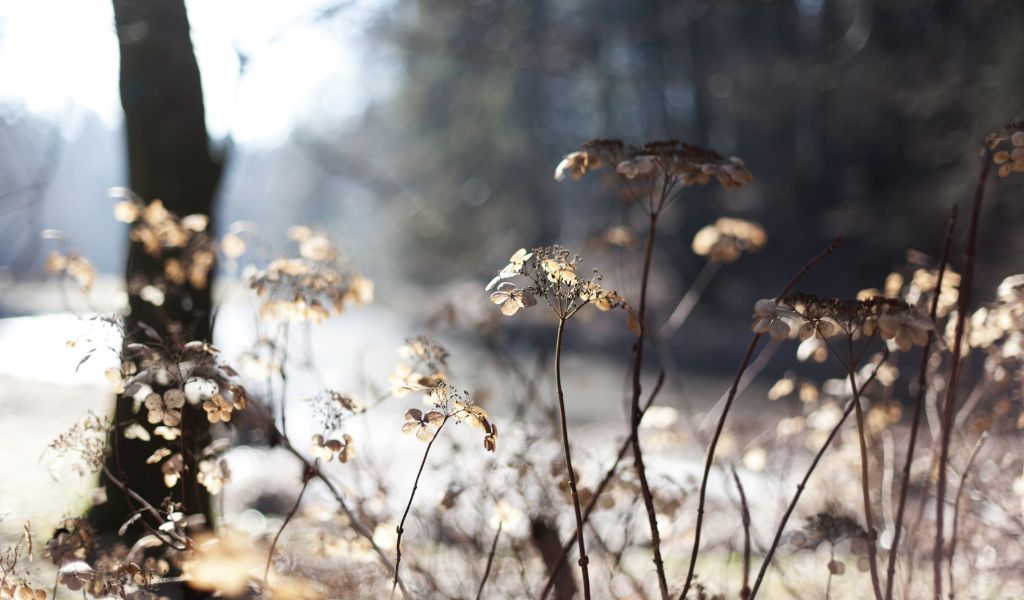The Winter Garden: Busting the Myth of Seasonal Limits
Gardening is often associated with the spring and summer months, when the sun is shining bright and temperatures are warm. However, this common misconception has led many to believe that gardening is only possible during these warmer seasons. The truth, however, is that gardening can be a year-round activity – even in the winter.
A Common Misconception
One of the most pervasive myths about gardening is that it’s a seasonal hobby. Many people believe that once fall arrives and temperatures begin to drop, it’s time to hang up their garden tools until next spring.
This simply isn’t true. While it’s true that some plants are best suited for growing in warmer weather conditions, there are plenty of options for planting and maintaining your garden during the colder months of the year.
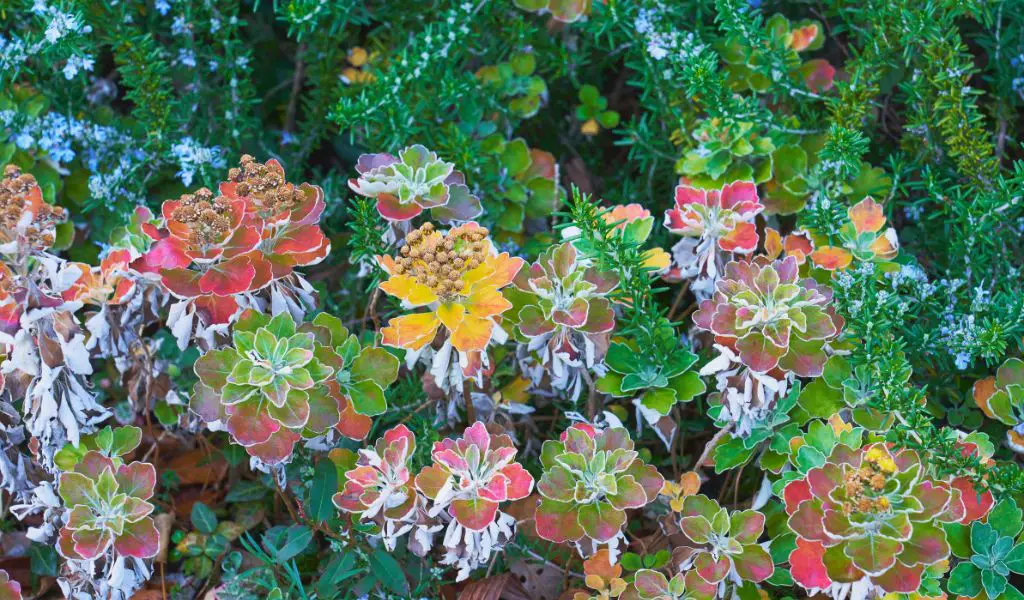
Growing in Winter: What You Need to Know
Growing a winter garden can be challenging, but it’s certainly not impossible. In fact, there are many plants that thrive in cooler weather conditions, and with a bit of preparation and planning you can enjoy fresh produce all winter long. When it comes to creating your own winter garden, there are several things you’ll need to keep in mind.
First and foremost is choosing the right plants for your climate zone. Some vegetables and herbs are better suited for colder temperatures than others – so do your research before deciding what to plant.
In addition to choosing cold-hardy crops, you’ll also need to consider factors like soil quality, lighting conditions (especially if growing indoors), and pest control strategies. By taking these factors into account before planting season begins, you’ll set yourself up for success as you embark on your wintertime gardening adventure.
Winter Vegetables
List of Vegetables that Thrive in Colder Temperatures
Many people believe that gardening is only for the warmer months. However, with the right vegetables and the proper care, you can continue to garden throughout the winter.
Some popular vegetables that thrive in colder temperatures include kale, spinach, cabbage, broccoli, and Brussels sprouts. These vegetables are known to thrive in colder temperatures and can withstand frost so that they can be harvested throughout the winter season.
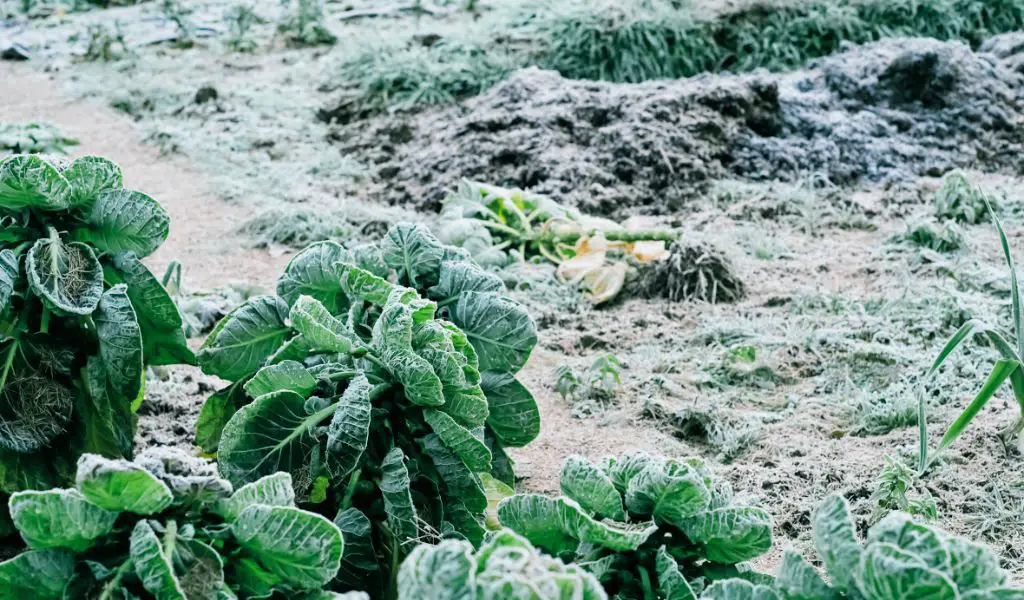
Description of Each Vegetable and Its Growing Requirements
Kale is a superfood that grows well in cooler weather. It comes in many different varieties such as curly-leafed or flat-leafed kale.
Spinach is another vegetable that thrives in cool weather climates. It can be grown from seeds or transplants and requires full sun exposure or partial shade.
Cabbage is a versatile vegetable that can add flavor to your winter meals. You can grow both green and red cabbage varieties during the winter season.
Broccoli is another cold-hardy vegetable with high nutritional value. It requires full sun exposure for at least six hours per day.
Brussels sprouts are a great option for gardeners looking to plant a low-maintenance crop during winter months. They require well-drained soil and full sun exposure for optimal growth.
Tips for Planting and Caring for Winter Vegetables
When planting winter vegetables, it’s important to prepare your soil properly by adding compost or aged manure before planting seeds or seedlings.
Additionally, when choosing which vegetables to plant, consider their growth rate and expected harvest times as some may take longer than others.
To care for your winter vegetables properly, make sure they receive enough water but not too much which could cause root rot or other problems like mold or mildew on leaves from excess moisture.
Make sure you monitor your winter greens for signs of pests or diseases and take action as needed.
With the right preparation and care, winter vegetables can be a hearty addition to your garden and provide a fresh source of nutrients during the colder months.
Winter Herbs
Herbs that can be grown indoors or in a greenhouse during winter
Just because the outdoor garden is dormant during the winter doesn’t mean you can’t still grow fresh herbs.
In fact, some herbs actually prefer cooler temperatures and will thrive indoors or in a greenhouse during the winter season.
Here are some of the best herbs to grow indoors or in a greenhouse during the colder months:
Parsley: This herb is perfect for indoor growing during winter as it enjoys cooler temperatures and partial sunlight. Be sure to place your parsley near a bright window, and keep the soil moist but not too wet.
Chives: These hardy perennial herbs grow well both outdoors and indoors. They prefer cooler temperatures around 60-70 degrees Fahrenheit, so they are perfect for growing indoors over the winter season.
Thyme: Thyme is another herb that thrives in cooler temperatures, making it an ideal candidate for indoor growing over winter. It prefers plenty of sunlight, so be sure to place it somewhere with at least six hours of direct sunlight per day.
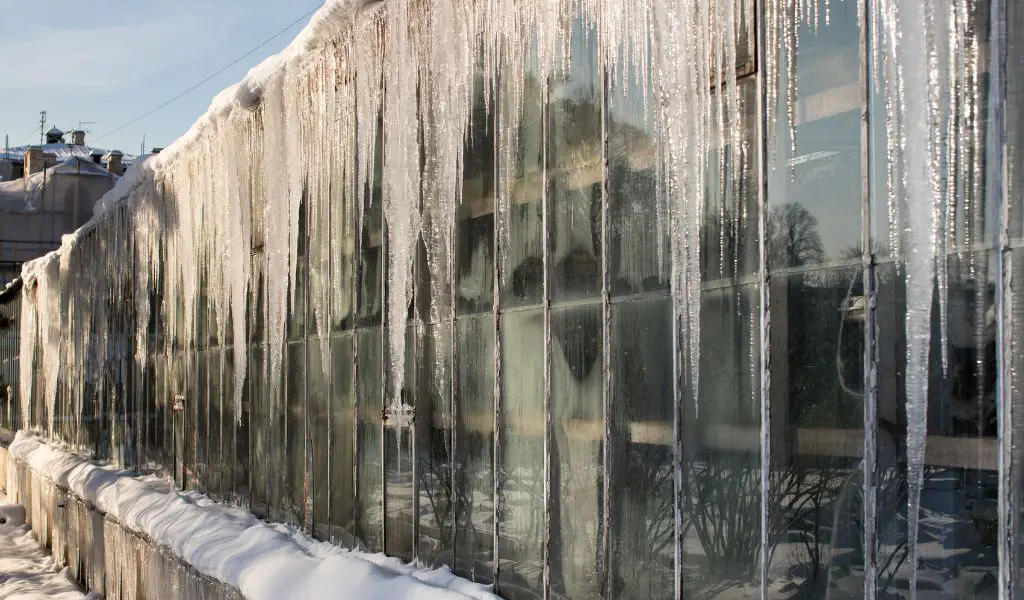
Description of each herb and its growing requirements
Parsley: Parsley is a biennial herb that can be used both as a garnish and as an ingredient in many dishes. It prefers well-drained soil with plenty of organic matter, and needs at least 5-6 hours of sunshine every day.
Chives: Chives are a member of the onion family and have long green leaves that can be snipped off for use in cooking. They prefer soil with good drainage, moderate fertility, and full sunlight.
Thyme: Thyme is an evergreen shrub-like plant with small green leaves that have a fragrant aroma. It requires well-drained soil and plenty of sunlight, at least six hours per day.
Tips for planting and caring for winter herbs
When growing herbs indoors or in a greenhouse during the winter season, it’s important to provide them with the right environment to thrive.
Here are some tips for planting and caring for winter herbs:
Choose the right container: Make sure your container has good drainage holes and is big enough to allow your herb plants room to grow.
Use proper soil: Choose a high-quality potting mix that provides good drainage and plenty of nutrients.
Provide enough sunlight: Most herbs require at least six hours of direct sunlight per day.
If you don’t have access to a sunny windowsill, consider investing in a grow light.
Don’t overwater: Herbs prefer well-drained soil, which means you should be careful not to overwater them.
Allow the soil to dry out slightly between watering sessions.
Fertilize regularly: Use an organic fertilizer every 2-4 weeks during the growing season to keep your herb plants healthy and thriving.
Winter Flowers
Dreary winter days can be brightened up by the presence of beautiful flowers. Contrary to popular belief, there are several types of flowers that bloom during the colder months. Here’s a list of some popular winter flowers:
Pansies
Pansies are a popular winter flower which comes in vibrant and cheerful shades of purple, yellow, blue and red. They are easy to care for and grow well in cool temperatures ranging between 40-60°F. Pansies should be planted in well-draining soil with plenty of sunlight.
It is important to keep the soil moist but not waterlogged as this can lead to root rot. These vibrant blooms are perfect for adding color to your garden beds or containers, and they also attract pollinators like bees and butterflies.
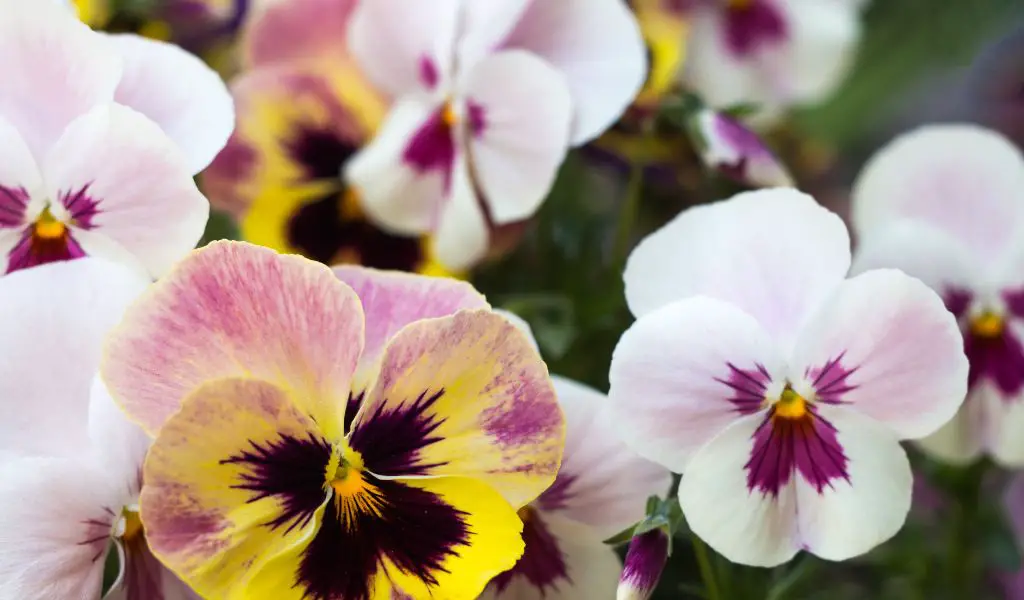
Cyclamen
Cyclamen is another lovely winter flower that blooms from December through March. These delicate flowers come in shades of pink, red, white and lavender and have unique heart-shaped leaves that add interest even when they are not blooming.
Cyclamens enjoy cooler temperatures ranging between 50-70°F but need bright but indirect light so it’s best to place them near a window that faces east or west.
It’s important not to overwater them as this can lead to root rot. Water only when the top layer of soil feels dry.
Winter Jasmine
Winter Jasmine is a bushy shrub with fragrant yellow flowers that bloom during late winter or early spring when few other plants offer color or fragrance in the garden landscape.
Winter jasmine prefers soils with good drainage and full sunlight conditions.
The plant has long vines which can be trained onto trellises or walls for optimal growth potential. Winter jasmine thrives in temperatures ranging between 40-70°F and enjoys being watered thoroughly but not frequently.
Tips for planting and caring for winter flowers
If you’re planning on planting winter flowers, here are some tips to keep in mind:
Plant your winter flowers in well-draining soil with plenty of sunlight
Water your plants when the soil feels dry to the touch, but avoid overwatering
Mulch around your plants to protect them from frost or freezing temperatures
Deadhead regularly to encourage new growth and flowering throughout the season
Gardening during the winter season can be a rewarding experience if you know what to plant and how to care for them. Add a pop of color and fragrance to your garden with these lovely winter blooms!
Unique Winter Gardening Ideas
Gardening during the winter season can be challenging but there are many creative ideas to make it possible.
With a bit of planning and preparation, you can continue to grow fresh produce and flowers all year round. Here are some unique winter gardening ideas that will help you make the most of the colder months:
Cold Frame or Hoop House
A cold frame or hoop house is a simple structure that can extend your growing season by several weeks or even months. A cold frame is essentially a mini greenhouse that is built close to the ground with a clear top, while a hoop house is constructed using PVC pipes and plastic sheeting.
Both structures trap heat and moisture, creating a microclimate that protects your plants from frost and freezing temperatures. To build your own cold frame, use scrap lumber or cinder blocks for the base, then add an old storm window or glass door for the top.
You can also purchase ready-made kits that come with everything you need to get started. Hoop houses are even easier to build – simply bend PVC pipes into an arch shape and attach them to wooden stakes driven into the ground.
Cover with clear plastic sheeting and secure with clips or bungee cords. With a cold frame or hoop house, you can grow cool-season vegetables like spinach, lettuce, kale, chard, carrots and radishes throughout the winter months without worrying about frost damage.
Growing Microgreens Indoors
If outdoor gardening isn’t an option for you during winter due to space limitations or weather conditions, try growing microgreens indoors instead!
Microgreens are young seedlings that are harvested when they are only 1-2 inches tall; they pack more nutrients per bite than their mature counterparts.
They are easy to grow and can be harvested in as little as 7-10 days. To get started with indoor microgreen gardening, all you need is a sunny windowsill or a grow light.
Fill shallow containers with potting soil, then sprinkle seeds on top and cover with a thin layer of soil. Water gently from the bottom and keep the soil moist until the seeds sprout.
Once the seedlings emerge, move them to a bright spot and continue watering regularly. Harvest when the leaves are fully developed but before they start to wilt or turn yellow.
You can grow a variety of microgreens indoors such as arugula, mustard greens, radish, broccoli, spinach and more. They add fresh flavor to salads, sandwiches or soups during winter when it’s hard to find fresh produce.
Conclusion and final thoughts 💭
After reading this article, it should be clear that winter gardening is not only possible but can also be highly rewarding. With the right plants and techniques, you can have fresh produce, herbs, and flowers even during the coldest months of the year.
By dispelling the myth that gardening is only for warmer months, you have opened up a whole new world of possibilities for your garden. If you’re interested in starting your own winter garden but don’t know where to begin, here are some tips to get started:
Choose the right plants
The key to successful winter gardening is selecting plants that are well-suited for colder temperatures. As mentioned earlier in this article, there are plenty of vegetables, herbs, and flowers that thrive in colder weather. Do your research and choose plants that will work well in your climate and growing conditions.
Prepare your soil
Before planting anything in your winter garden, it’s important to prepare your soil properly. Make sure it’s well-drained and has plenty of organic matter to help retain moisture and nutrients. You may also want to consider using raised beds or containers if you’re worried about frost heave or drainage issues.
Protect your plants from the elements
It’s important to protect your winter garden from harsh weather conditions like freezing temperatures and heavy snowfall. Consider using row covers or cloths to protect delicate plants from frost damage or investing in a greenhouse or hoop house if you live in an area with particularly cold winters.
Winter gardening is not only possible but can also be highly rewarding with fresh produce even during cold months. By following these tips on plant selection, soil preparation and protection against harsh weather conditions; anyone can start their own winter garden regardless of climate zones they live within!

